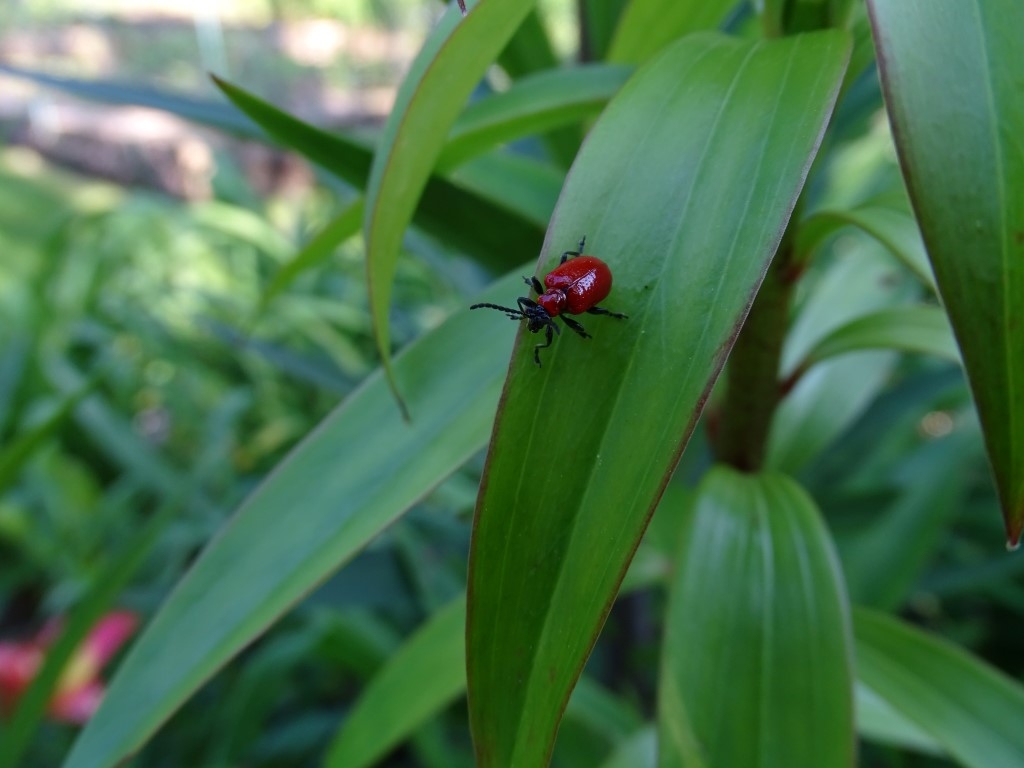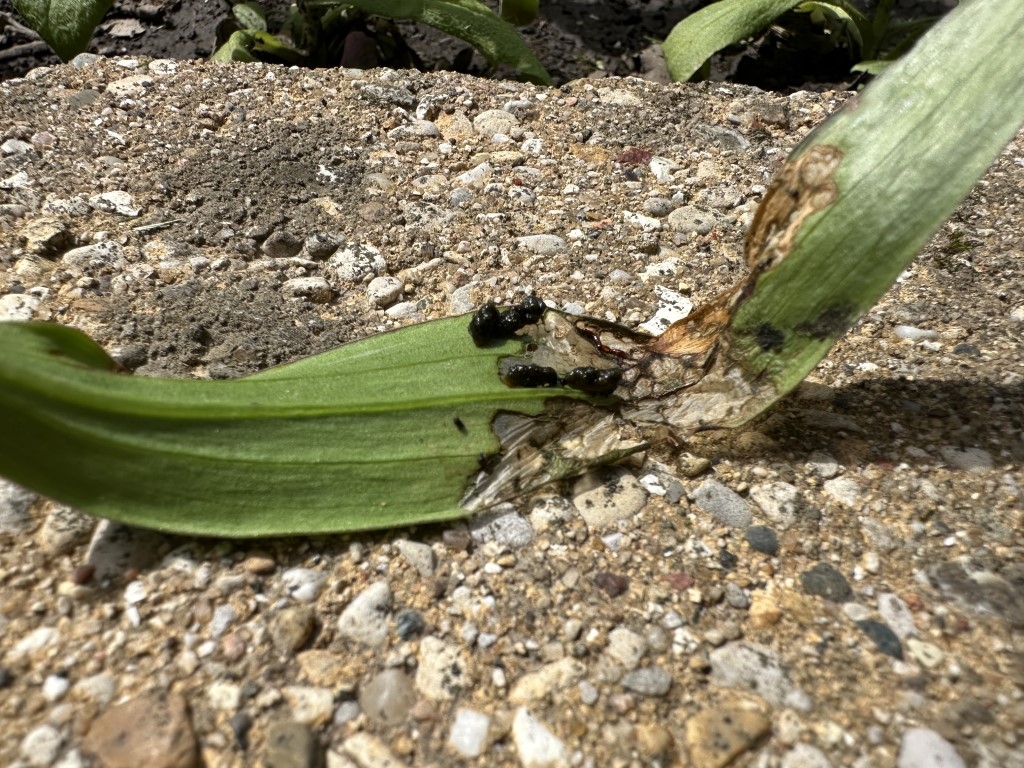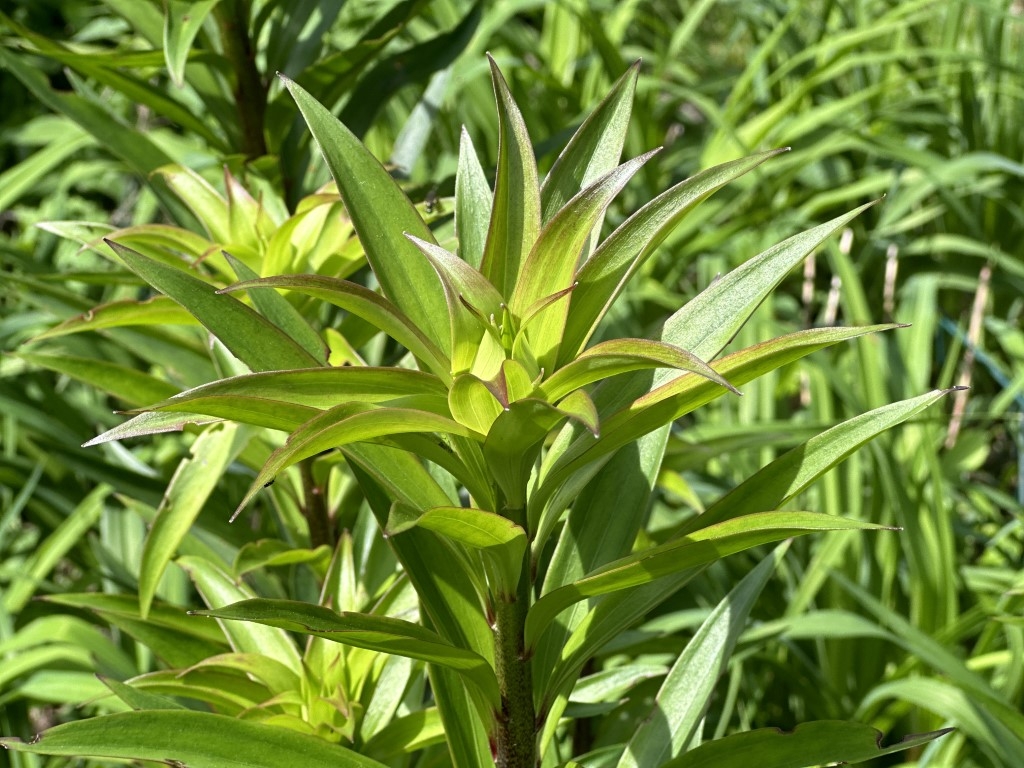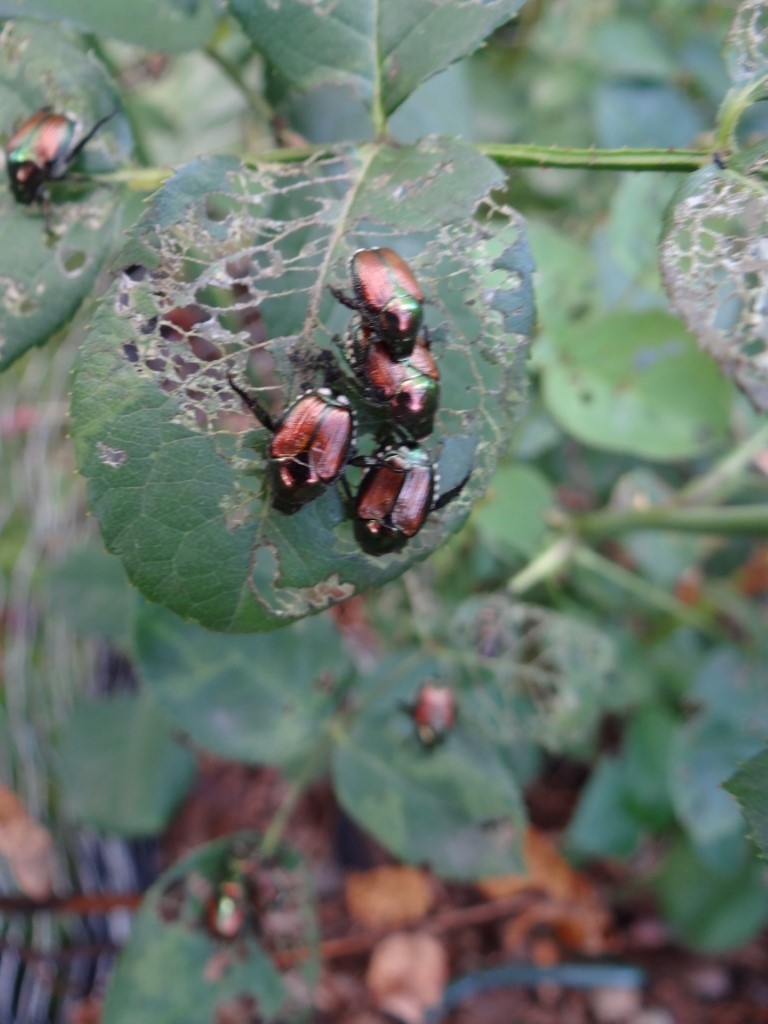I’ve been dreading their arrival since I learned about these vile creatures a few years ago, and now they’re here. Lily Leaf Beetles (LLBs) voraciously devour true lilies including the leaves, stems and flowers. The adults are impossible to miss—they are a brilliant, scarlet-red:

I saw that flash of red when I was transplanting a perennial last weekend, and my heart sank. I flipped over some lily leaves and sure enough, there were the larvae of this devastating pest.
These creatures are right out of a horror movie. The larvae hide themselves in their own excrement which makes them look like smashed bugs or slugs or just bug poo left behind:

Worse yet, larvae can reach ONE-HALF INCH LONG!!! <shudder>
But my favorite terrifying tidbit of information comes from the University of Wisconsin Extension bulletin about the Lily Leaf Beetle:
“When disturbed, LLBs tumble from plants and land upside down on the ground, where they play dead. Their dark-colored undersides make them hard to spot. To potentially deter predators, adults squeak if squeezed.“
I don’t know about you, but I don’t want my insects squeaking!!!!
I have been obsessed with Oriental lilies for years but I fell even harder for the newer lily crosses like Orienpets and LA hybrid lilies. I love to use them to add height and an explosion of additional color to my flowerbeds from mid-July through early August. The arrival of LLBs is a big blow.




My first thought, Plan A, was total surrender—rather than watch the lilies get devoured, I’ll just cut them to the ground myself! I’m still exhausted from battling Japanese beetles for more than a decade. I don’t want to declare war on another invasive species.
At least Japanese beetles are easy to drop into a soapy bucket. And thankfully their numbers have dropped significantly here as they slowly move westward across the United States.
I’m not big on using pesticides, and I have no interest in grabbing squeaking red beetles or getting rid of slimy larvae. But while I was busy putting thousands of annuals into the ground over the last several weeks, the beetles were busy. A few of my lilies are already showing signs of an attack.

My plan to cut all my lilies down myself lasted about 24 hours. I just didn’t have the heart to do it. Then I happened to stumble upon a post in a Facebook gardening group. Someone in my area was having the same problem and asked for advice, and one of the answers was spraying with Captain Jack’s Dead Bug Brew (this is NOT an affiliate link).
From the manufacturer: “The active ingredient in Dead Bug Brew is a naturally occurring bacteria called Spinosad. Spinosad is a leading pesticide used worldwide in the production of organic produce.”
I figured I’d give it a try before resorting to Plan A. I sprayed my plants during the only two dry days we’ve had in quite awhile. The biggest challenge was spraying under leaves to get the larvae. Any time you turn a spray bottle upside-down it’s not going to want to function properly.

I resorted to putting on a long glove and then grabbing the leaves from the bottom and pinning them close to the stem and then spraying in a sweeping-up motion as I continued to move my gloved hand up the stem. Since then I haven’t found any adult beetles, but I have found some larvae. However it’s impossible to know if I just didn’t get those larvae when I sprayed or if they are undeterred by the brew.
Whatever the outcome, I do know that I won’t be planting anymore lily bulbs for the foreseeable future!

